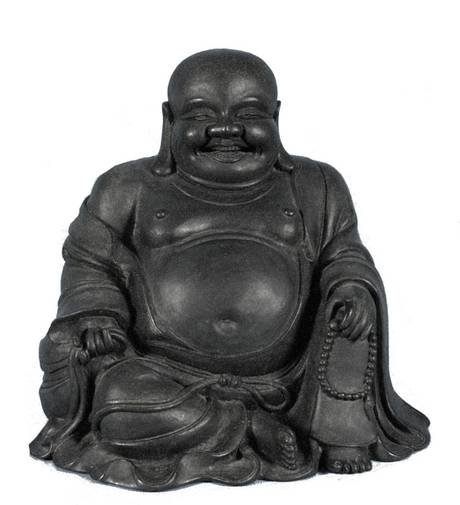Laughing Buddha
Laughing Buddha statues are perhaps one of the most loved artefacts. They are commonly seen in homes, offices, hotels, gardens, restaurants, shops, and museums and temples. They are made of wood, metal, porcelain, and stone or painted in colour and line.
The Laughing Buddha is a symbol of happiness, contentment and prosperity. He is called ‘Budai’ in Chinese. Figures of the Laughing Buddha at the Salar Jung Museum are popular with the visitors.
According to Chinese tradition, ‘Budai’ was an eccentric Chinese Zen monk who lived during the later Liang dynasty (907-923 AD) of China. He was a native of Fenghua and his Buddhist name was Qieci (Chinese : Pinyin). He was considered a man of good and loving character. Some Buddhist traditions consider him a Buddha or ‘Bodhisattva’, usually Maitreya (the future Buddha). His large protruding stomach and jolly smile have given him the common designation “Laughing Buddha”.
In Japanese, ‘Budai’ is pronounced as ‘Hotei’. It means ‘clothsack’ or ‘glutton’. It is believed that if one rubs the belly of Buddha, it brings good luck and wealth. The Laughing Buddha is also seen as one of the seven Japanese Shinto Gods of luck.
In Thailand, ‘Budai’ is sometimes confused with a widely-respected monk, ‘Sangkachai’. ‘Sangkachai’ was a Budhist ‘Arhat’ (Arahant in ‘Pali’) during the time of Lord Buddha. Lord Buddha praised Angkachai for his excellence in explaining Dharma easily and correctly.
He was one of the Eighteen ‘Arhats’ of Buddhism.
However, two points distinguish ‘Sangkachai’ from ‘Budai’.
While Sangkachai has a trace of hair on his head, ‘Budai’ is clearly bald. And while ‘Budai’ covers both arms and leaves the torso uncovered, Sangkachai wears robes folded across one shoulder.
Chinese temples have figures of the Laughing Buddha located at temple entrances. He is often worshipped as a God of good luck and prosperity.
The Lingyin temple in Hangchou has a Laughing Buddha carved out of camphor wood, over 60-feet tall and gilded with one hundred ounces of gold leaf. The Lama temple in Beijing has the largest Laughing Buddha, which is carved from a single piece of wood.
Taiwan’s Treasure Cognition temple at Taichung houses the country’s largest Laughing Buddha, with his bald head touching the ceiling.
Called ‘Fat Buddha’ in English-speaking countries, ‘Hasne Buddha’ in Nepalese, the Laughing Buddha is all about blurring the cultural divide between West and East as he brings good luck to all.


